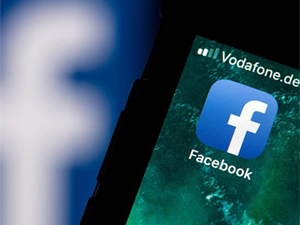



Date:14/09/18
 Fake images and videos are the next targets of Facebook’s ongoing effort to fight misinformation.
Fake images and videos are the next targets of Facebook’s ongoing effort to fight misinformation.
In a blog post published today, the company announced that it is giving all 27 of its global fact-checking partners the ability to debunk photos and videos on the platform. Once a piece of content is rated as false, its future reach in the News Feed will be reduced by up to 80 percent and a fact check will be appended in the Related Articles section. (Disclosure: Being a signatory of the International Fact-Checking Network’s code of principles is a necessary condition to be a partner.)
Videos and photos that users flag as potentially false will now filter into the dashboard that fact-checkers use to select which pieces of content to debunk. Before, most fact-checking partners could only debunk links to false news stories; Agence France-Presse was the first organization to start debunking images for Facebook last spring, when Facebook started testing the capability.
“Many of our third-party fact-checking partners have expertise evaluating photos and videos and are trained in visual verification techniques,” Antonia Woodford, a Facebook product manager, wrote in today’s blog post. “Fact-checkers are able to assess the truth or falsity of a photo or video by combining these skills with other journalistic practices, like using research from experts.”
Stories can have ratings such as false, satire, opinion and prank in Facebook’s system for fact-checking articles, and multimedia will have the same scale. Facebook identified three main categories of false photos and videos that usually make the rounds on the platform: manipulated or fabricated, out of context and text or audio claim.
As Facebook gets more signals from fact-checkers, it will improve its machine learning models’ ability to predict future misinformation. The company is also leveraging technology that can extract text from photos and compare them against headlines in previously debunked stories, according to the blog post.
That’s important because misinformation often travels across media.
“Based on research with people around the world, we know that false news spreads in many different forms, varying from country to country,” Woodford wrote. “However, these categories are not distinct. The same hoax can travel across different content types, so it's important to build defenses against misinformation across articles, as well as photos and videos.”
Facebook expands fact-checkers’ ability to debunk false photos and videos
 Fake images and videos are the next targets of Facebook’s ongoing effort to fight misinformation.
Fake images and videos are the next targets of Facebook’s ongoing effort to fight misinformation.In a blog post published today, the company announced that it is giving all 27 of its global fact-checking partners the ability to debunk photos and videos on the platform. Once a piece of content is rated as false, its future reach in the News Feed will be reduced by up to 80 percent and a fact check will be appended in the Related Articles section. (Disclosure: Being a signatory of the International Fact-Checking Network’s code of principles is a necessary condition to be a partner.)
Videos and photos that users flag as potentially false will now filter into the dashboard that fact-checkers use to select which pieces of content to debunk. Before, most fact-checking partners could only debunk links to false news stories; Agence France-Presse was the first organization to start debunking images for Facebook last spring, when Facebook started testing the capability.
“Many of our third-party fact-checking partners have expertise evaluating photos and videos and are trained in visual verification techniques,” Antonia Woodford, a Facebook product manager, wrote in today’s blog post. “Fact-checkers are able to assess the truth or falsity of a photo or video by combining these skills with other journalistic practices, like using research from experts.”
Stories can have ratings such as false, satire, opinion and prank in Facebook’s system for fact-checking articles, and multimedia will have the same scale. Facebook identified three main categories of false photos and videos that usually make the rounds on the platform: manipulated or fabricated, out of context and text or audio claim.
As Facebook gets more signals from fact-checkers, it will improve its machine learning models’ ability to predict future misinformation. The company is also leveraging technology that can extract text from photos and compare them against headlines in previously debunked stories, according to the blog post.
That’s important because misinformation often travels across media.
“Based on research with people around the world, we know that false news spreads in many different forms, varying from country to country,” Woodford wrote. “However, these categories are not distinct. The same hoax can travel across different content types, so it's important to build defenses against misinformation across articles, as well as photos and videos.”
Views: 468
©ictnews.az. All rights reserved.Similar news
- Azerbaijani project to monitor disease via mobile phones
- Innovative educational system to be improved under presidential decree
- NTRC prolongs license of two TV and radio organizations for 6 years
- Azerbaijan establishes e-registry for medicines
- Azerbaijani museum introduces e-guide
- Nar Mobile opens “Nar Dunyasi” sales and service center in Siyazan city
- International conference on custom electronic services held in Baku
- OIC secretary general to attend COMSTECH meeting in Baku
- Azerbaijan develops earthquake warning system
- New law to regulate transition to digital broadcasting in Azerbaijan
- Azerbaijani State Social Protection Fund introduces electronic digital signature
- Intellectual traffic management system in Baku to be commissioned in December
- Tax Ministry of Azerbaijan started receiving video-addresses
- World Bank recommends Azerbaijan to speed up e-service introduction in real estate
- Azerbaijan to shift to electronic registration of real estate





















